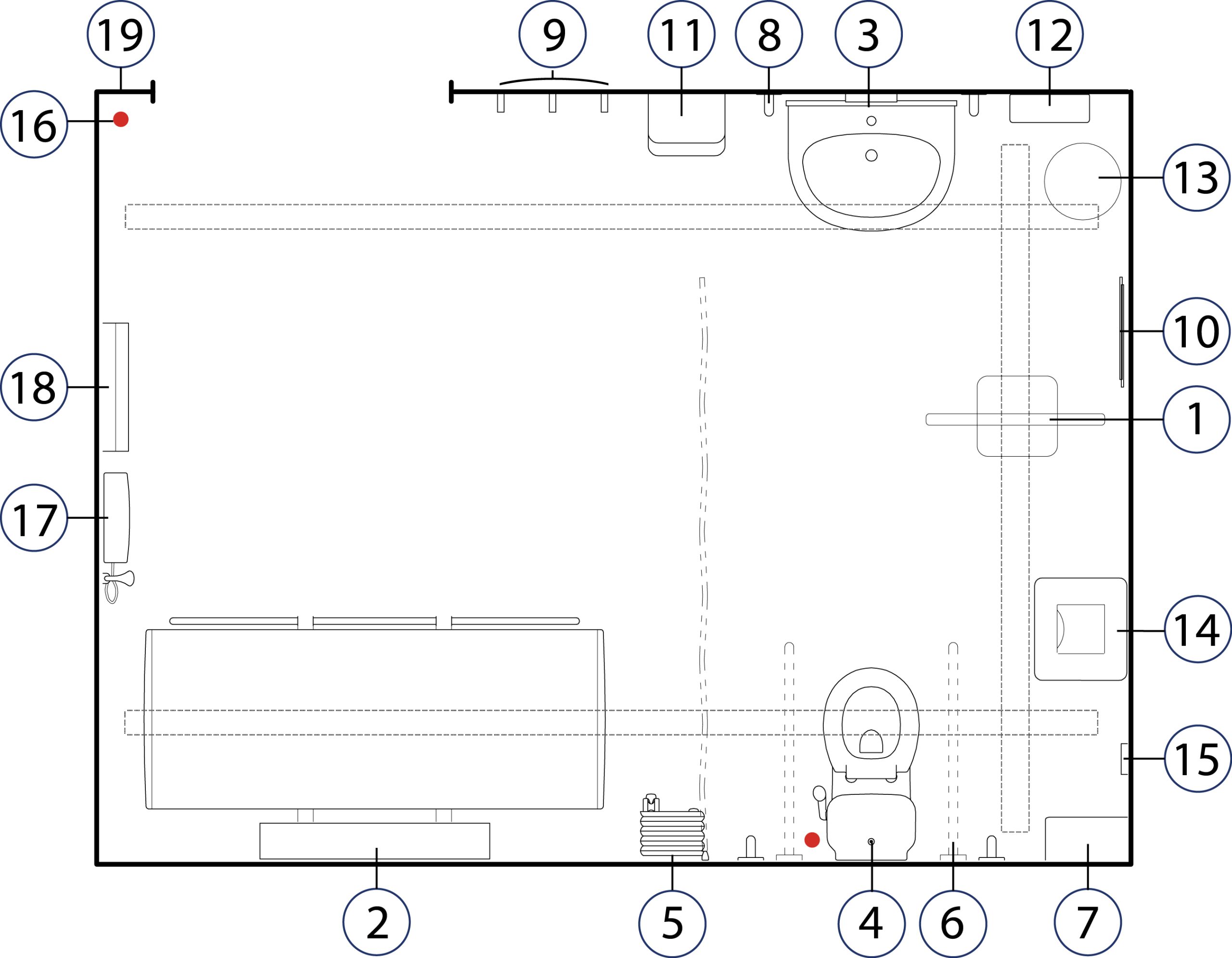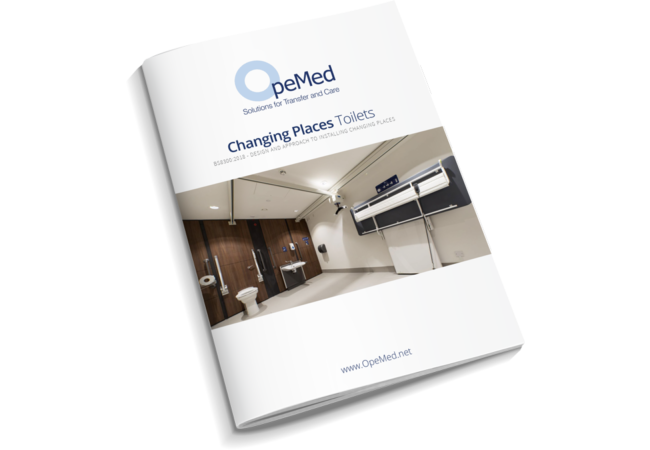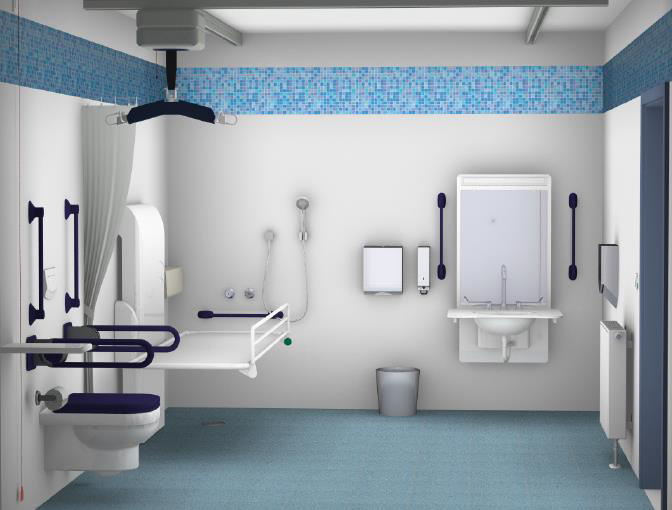The Changing Places Specification
Equipment Specifications
Traditional accessible toilets do not often meet the needs of the thousands of people with profound and multiple learning disabilities as well as other severe impairments such as spinal injuries, muscular dystrophy and cerebral palsy.
A Changing Places toilet has more space and provides the equipment people need to be able to use the toilet in safety and comfort. It is important that these features are all present in order to make sure the toilet is suitable for those who need it most.
Click on the diagram numbers to uncover the Changing Places specifications:
Summary
For the full equipment list and design guidance, download the comprehensive guide:

Changing Places useful guides and downloads
Designing a Changing Places
Changing Places state that builders must meet a certain standard and criteria to be registered on the Changing Places map and to be allowed to use the Changing Places logo. This is to ensure that any facility advertised as a Changing Places toilet meets the expectations and needs of the people who intend to use them.
For advice on health and safety and legal matters, please refer to our legal factsheet. Remember that slings should not be provided by the venue.
A Changing Places must comply to the British Standard ‘BS8300:2018‘ for the design of buildings and their approaches to meet the needs of disabled people. It provides guidance on good practice for the design of new buildings and their approaches to meet the needs of disabled people.
To be registered online, the facilities must be open to the public. Also, Changing Places toilets should be installed in addition to, not in replacement of, standard accessible toilets for independent use.
Space Required
We recommend that the dimensions of the room are a minimum of 12m2 (3m x 4m), with a ceiling height of 2.4m. Some facilities listed as Changing Places will be smaller than 12m2. This reflects the standards of Changing Places toilets when the campaign was launched in 2006, before the British Standard 8300:2018 came into practice.
Facilities which do not provide all the features in the Changing Places Standard section below, or alternative layouts, may not be identified as a Changing Places toilet. However, they may still be of benefit to disabled people and their carers, and as such information regarding these facilities may be included on the website.
Equipment Required
Support for Architects and Contractors
As the sponsor of the Changing Places campaign, manufacturer of ceiling hoists and supplier of the full specification, OpeMed are the experts in advising on the layout as well supplying and installing the required products. By dealing directly with the manufacturer you can be assured of the most cost effective solution as well as guidance on obtaining official Changing Places accreditation for the room. Submit an enquiry to start the Changing Places conversation.
Good planning and advice from OpeMed will ensure:
- You choose the best equipment for your client and the room
- That the Changing Places meets the community’s needs
- That you achieve the most practical or user-friendly layout of equipment and facilities
- That your project finishes within budget
We Provide




